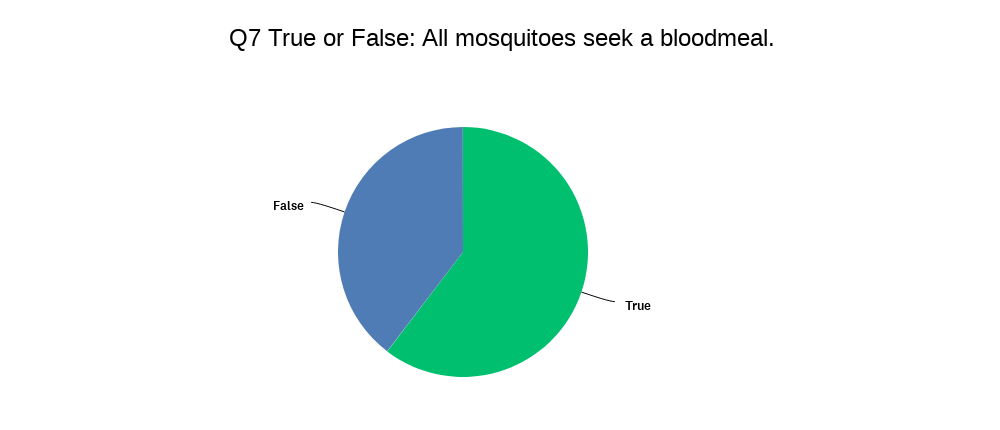The Mosquito Minute: Blog Post 4
Hello everyone! Welcome back to The Mosquito Minute.
We have been quite busy this past week with trapping and sorting as we have trapped the
most this week than any previous week! Fortunately, we did not have any run ins with ticks
this week, which always calls for a sigh of relief. We tend to find an abundance of
mosquitoes near animals and stagnant bodies of water, so it is crucial (especially during
peak summer months) to keep you and your pets safe by using the proper protection
methods to ward oƯ mosquitoes and any other biting insect. There is no update on test
results this week, but be sure to check back next week!
Types of Mosquitoes Found:
The data that we received back has informed us that we have five diƯerent species of
mosquitoes. (1) Aedes cinereus, which is considered an “ankle biter” because it tends to
attack the lower extremities. It is an aggressive biter, so more than one bite will typically be
found in one blood meal retrieval. They are active during all hours of the day. (2) Aedes
japonicus, which has the common name of Asian Bush Mosquito. This mosquito is quite
invasive and is a frequent inhabitant of containers (standing water). (3) Culex sp., has the
name of House Mosquito. These are the most common type of mosquito in our area and
are most active at dusk and dawn. They are capable of transmitting West Nile Virus and
Japanese encephalitis. Our mosquitoes tested negative for both. (4) Anopheles
punctipennis and (5) Anopheles quadrimaculatus are known as the Malaria mosquitoes.
These mosquitoes get their name (you guessed it) from carrying malaria. Although we have
the malaria mosquitoes in Harrison County, none have come back positive for malaria, so
don’t worry!
Survey Question of the Week:
 According to our survey, 60% of people believed that all mosquitoes seek a bloodmeal, and
According to our survey, 60% of people believed that all mosquitoes seek a bloodmeal, and
40% believed that to be false! The correct answer is false. Only female mosquitoes seek a
bloodmeal because she needs it in order to lay her eggs. Our blood, along with other warm-blooded animals, is a great source of protein and other nutrients that the hatchlings need
to survive! She only seeks a bloodmeal when her reproductive cycle is coming to an end.

